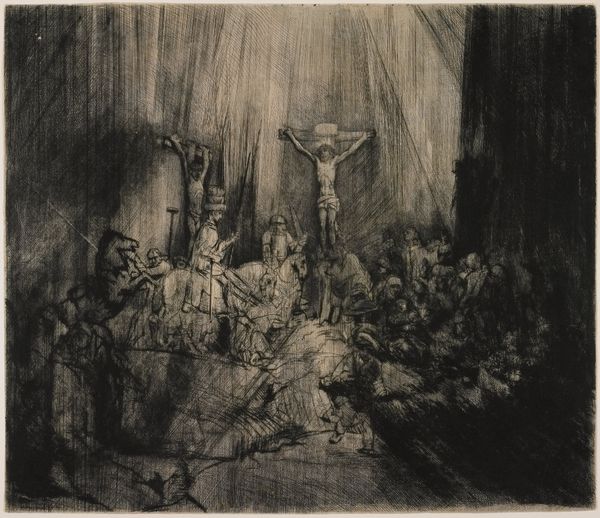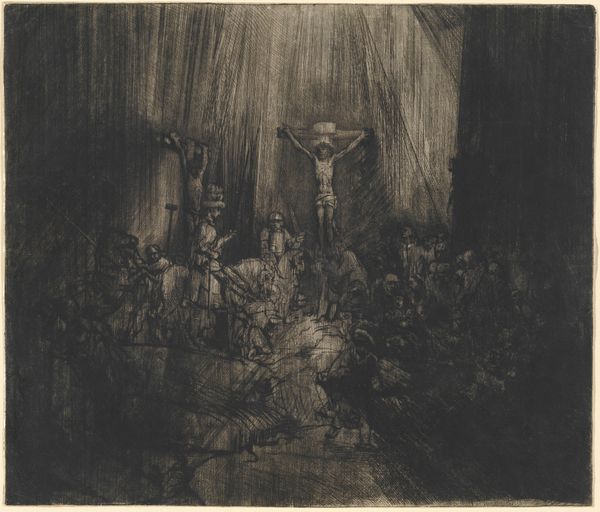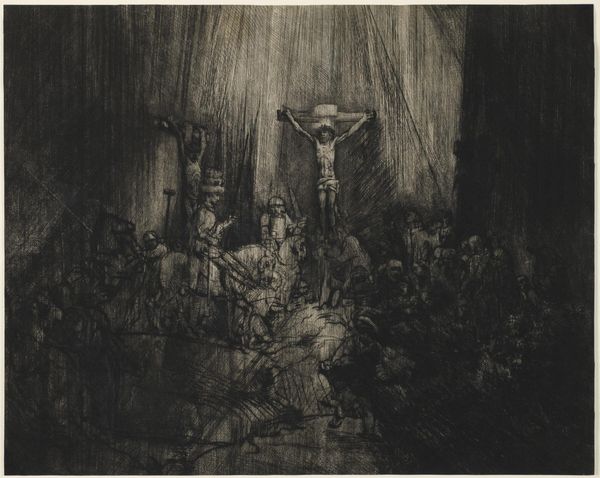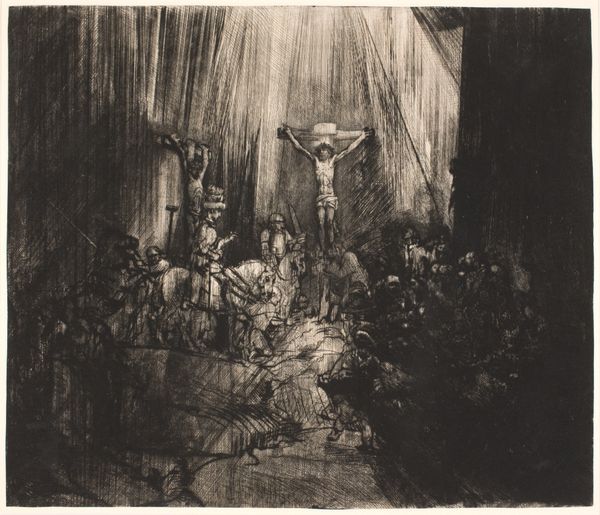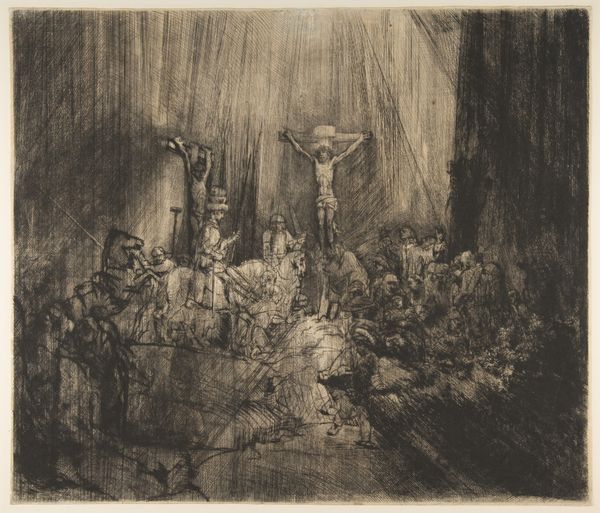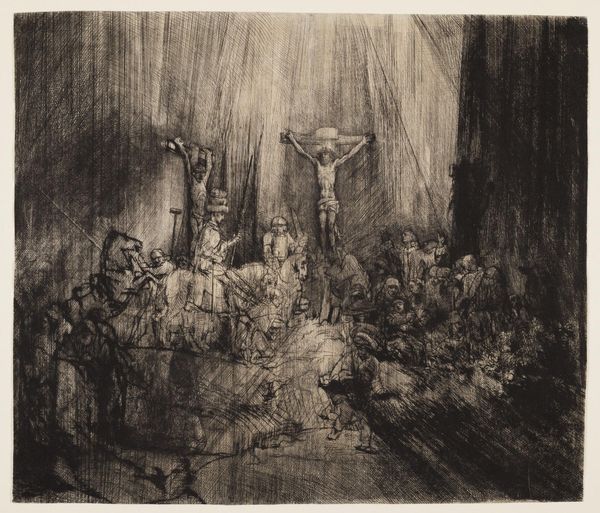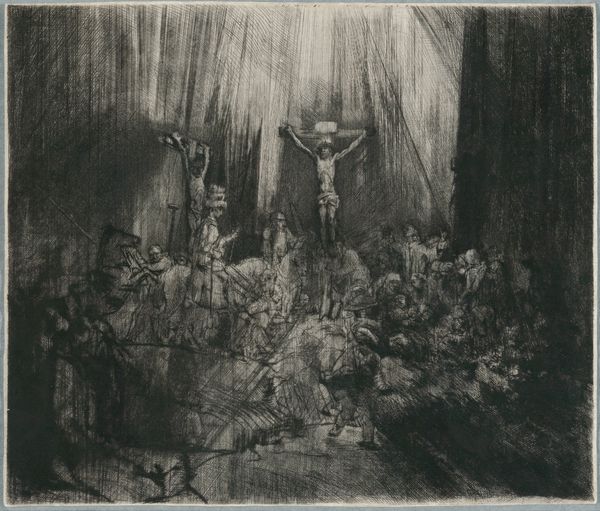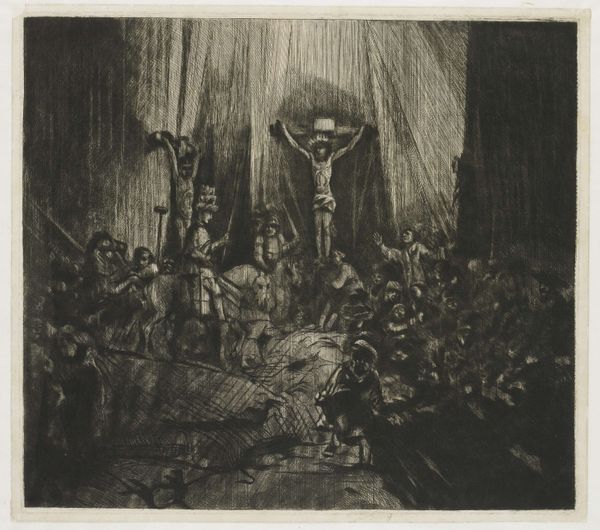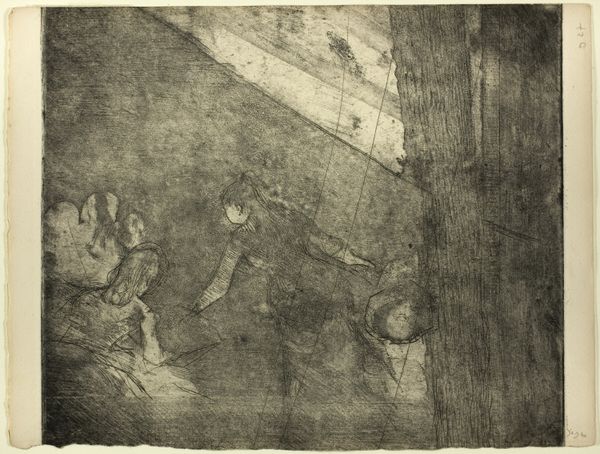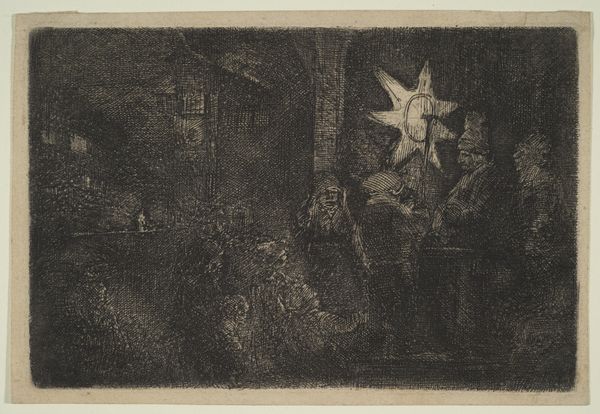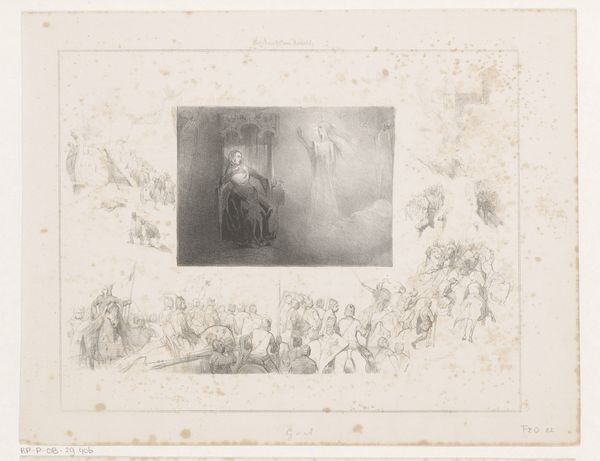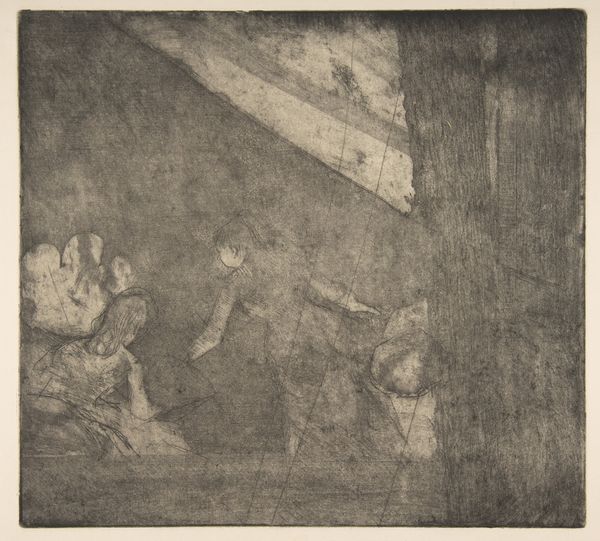
Christ crucified between the two thieves_ 'The three crosses' c. 1653 - 1654
0:00
0:00
drawing, print, etching, paper, charcoal
#
drawing
#
narrative-art
#
baroque
# print
#
etching
#
charcoal drawing
#
paper
#
charcoal art
#
jesus-christ
#
14_17th-century
#
crucifixion
#
charcoal
#
history-painting
#
charcoal
Copyright: Public Domain
Editor: We’re looking at Rembrandt van Rijn’s "Christ Crucified Between the Two Thieves," also known as "The Three Crosses," created around 1653-1654. It’s an etching on paper. The first thing that strikes me is how stark and dramatic it is – almost theatrical. What do you make of it? Curator: The use of etching here is really important. Rembrandt's masterful manipulation of the etching process - the controlled biting of the plate with acid, the layering of lines - that’s how he achieves that dramatic range of light and dark. This was printmaking as a form of high art. Note, also, the amount of labor in producing those dense lines. And consider the accessibility that printmaking afforded – it’s not just a painting for a wealthy patron, it’s a distributed image, circulating ideas and challenging traditional artistic patronage. Editor: So the *means* of production impacted who experienced the image. But does that impact how we *interpret* the crucifixion scene? Curator: Absolutely. By emphasizing the material process, Rembrandt forces us to consider the economics of art itself. He democratizes a traditionally exclusive subject. The sheer scale and detail speak to his studio’s capacity, the division of labor needed to produce such a complex image in multiples. Look closely. You can imagine assistants in his workshop contributing to various stages, impacting the final product. The marketplace drove this as much as religious feeling, if not more. Does this alter your sense of the emotional intensity, or do you think it strengthens it? Editor: I think it complicates it, but in a good way. It grounds the image in its social and economic realities. Curator: Exactly! By focusing on the materials and modes of production, we gain insight into the artist’s intentions and the context in which this powerful image was created and distributed.
Comments
No comments
Be the first to comment and join the conversation on the ultimate creative platform.
